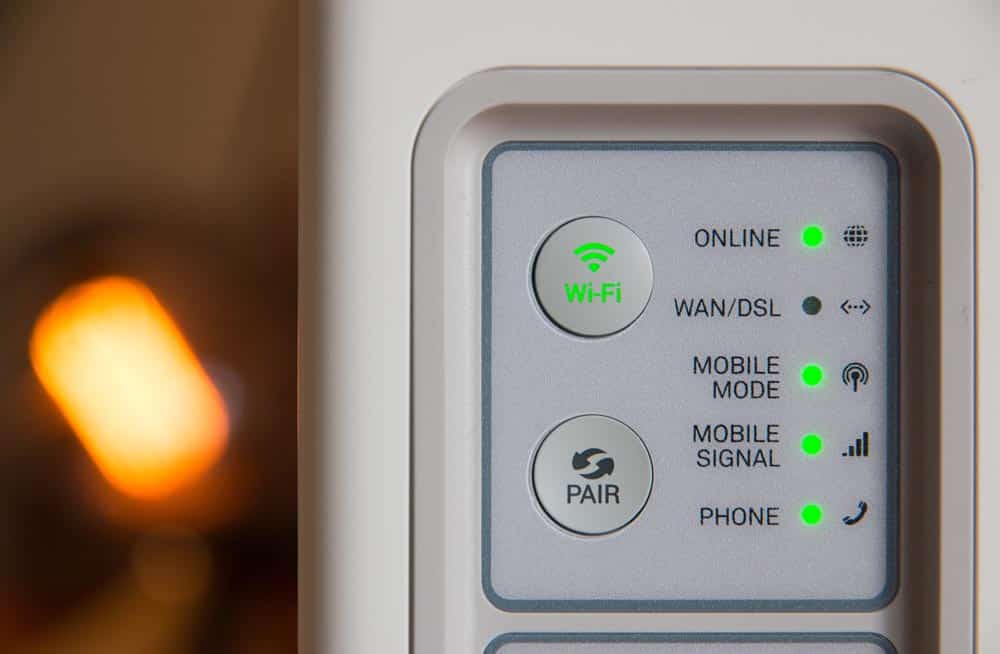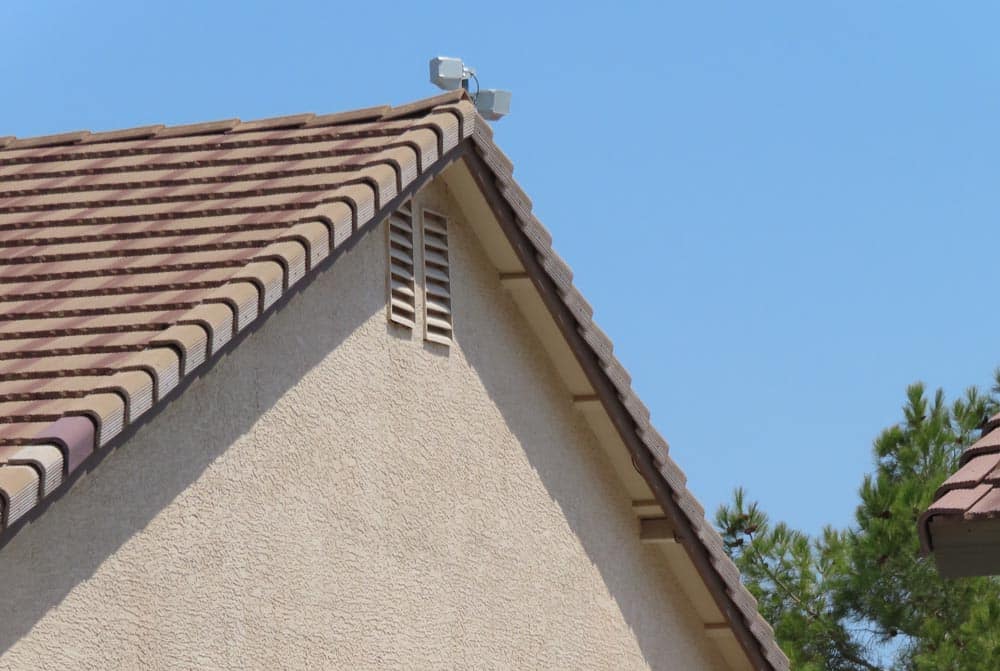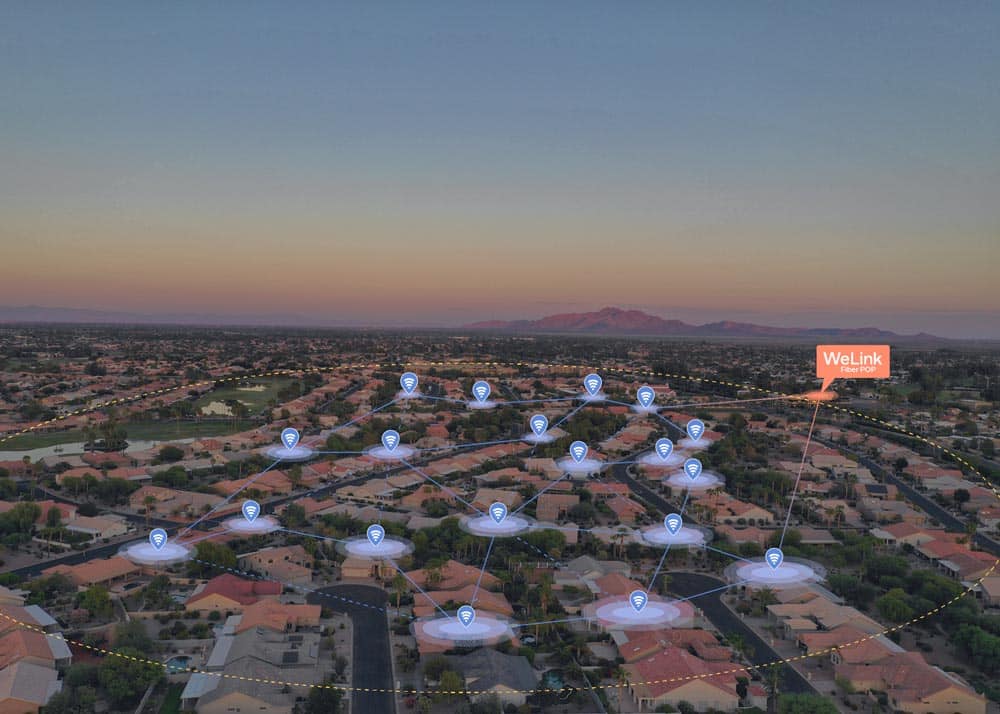It’s incredible to think about how much of our lives we spend online. In a recent survey, 77% of participants reported spending more than 8 hours per day connected to the internet.1 With so much of our daily lives happening online, internet access has never been more important. Broadband access is crucial to maintaining our digital lifestyle and an essential part of our connected homes. Unfortunately, broadband services can also be confusing to navigate, and many people struggle to find the best internet for their homes.
If you’ve ever wondered, “Where can I find the best broadband providers?” or “why is high-speed internet so expensive?” or “why can’t I get fiber internet in my area?” then this guide is for you. Allow us to give you the lowdown on your broadband internet options.

What is broadband internet anyway?
To know what broadband internet is, you first have to know what dial-up internet is. Remember connecting to the internet when you were younger—that annoying screech and painful noise you used to hear when you loaded the internet or when you tried to call someone who also happened to be online? That’s because that same legacy dial-up internet of our past relied on existing phone lines made of copper wire initially intended for home telephones. Broadband internet is different because it’s “always-on,” meaning you don’t have to dial in to connect anymore.
Most internet providers today have transitioned to broadband connections via digital subscriber line (DSL). DSL helps to improve internet performance but does have its limits. In most cases, DSL can provide high-speed downloads but cannot deliver high-speed uploads. Slow upload speeds are a problem for video conferencing, gaming, or any other activity that relies on real-time interactions between 2 or more people. The underlying problem remains, which is that copper only transmits data well in one direction. DSL simply wasn’t engineered to enable today’s digital lifestyles.
How fast is fiber internet compared to DSL?
Remember that legacy dial-up relies on copper wire to transmit data. Fiber internet, on the other hand, uses a fiber-optic cable that’s ideal for high-speed internet activities because it allows for data to transfer seamlessly in both directions. When we talk about fiber internet, we often mention the upload and download speeds are symmetrical because data moves bi-directionally at the same rate. Fiber-optic cables also come with broader bandwidth that allows more data to pass through each second so you can maintain speeds across multiple devices at the same time.
The only downside to fiber internet is that it is expensive and time-consuming to build because it requires all new fiber-optic cable lines to connect to each location. Fiber construction requires government permits, zoning, and all kinds of other additional overhead for internet service providers to consider when expanding their networks. In parts of the world with lower population density and geography that can be difficult to traverse, fiber networks can take even longer to build and be even more costly for end-users.
Can I get WiFi from satellite internet?
Some internet service providers use satellites to connect users around the world. Satellite service is incredible because it has virtually no geographic limitations. It can be the best solution for areas of the globe where connectivity has traditionally been a challenge.
While satellite internet comes with many benefits, the most common challenge satellite internet providers have faced is higher than average latency. Latency is the time it takes to transfer data between its source and its destination. The lower your latency is, the faster data can transmit from one end to the other. Latency is a challenge for satellite internet providers because satellites are far away. It takes time for data to travel to space and return. It’s essential to consider those activities we mentioned before, like video conferencing and gaming, or any other activity that relies on real-time interaction between 2 or more people.

What is WeLink “wireless-fiber” internet?
Wireless networks are often referred to as the next generation of residential broadband because they provide many of the benefits of traditional fiber-to-the-home (FTTP), but without the additional time and overhead costs incurred with conventional fiber construction. Most wireless-fiber networks offer higher speeds than satellite or DSL. Like traditional fiber internet, wireless-fiber networks provide symmetric uploads and downloads with ultra-wide bandwidth for all your devices.
Like satellite networks, legacy wireless networks have consistently provided high speeds and bandwidth, but they have struggled to keep up with real-time data transmission. WeLink next-gen technologies solve latency challenges with intelligent network routing and built-in interference immunity.

How does WeLink wireless broadband work?
To start, you may already know that many local businesses have fiber internet access. WeLink wireless broadband uses existing fiber to create a wireless-fiber point-of-presence (PoP). This fiber PoP broadcasts a fiber internet signal to nearby homes equipped with WeLink network receivers. Each wireless receiver connects to multiple network access points and acts as both location access and a network relay point to amplify the network coverage area without additional fiber PoPs.
Intelligent network routing and built-in interference immunity allow for greater capacity than legacy wireless solutions. Rooftop receivers connect the network outside to in-home mesh WiFi routers providing robust, whole-home connectivity. Speed and reliability continue to improve as more people join the network. The proximity of each network component improves network latency and enables greater network capacity.
Check out this quick video to learn more about how we build WeLink wireless networks.
In Summary
Our award-winning and innovative approach make WeLink wireless broadband 10x faster and less expensive to build with the same benefits of a traditional fiber internet experience. The result? Better, speedier WiFi for your home and all your connected devices.
Are you interested in improving your home WiFi? Call a Pro or sign up to find out if WeLink wireless broadband is available in your area.
1Company analysis: Net Promotor Score (NPS) survey results

